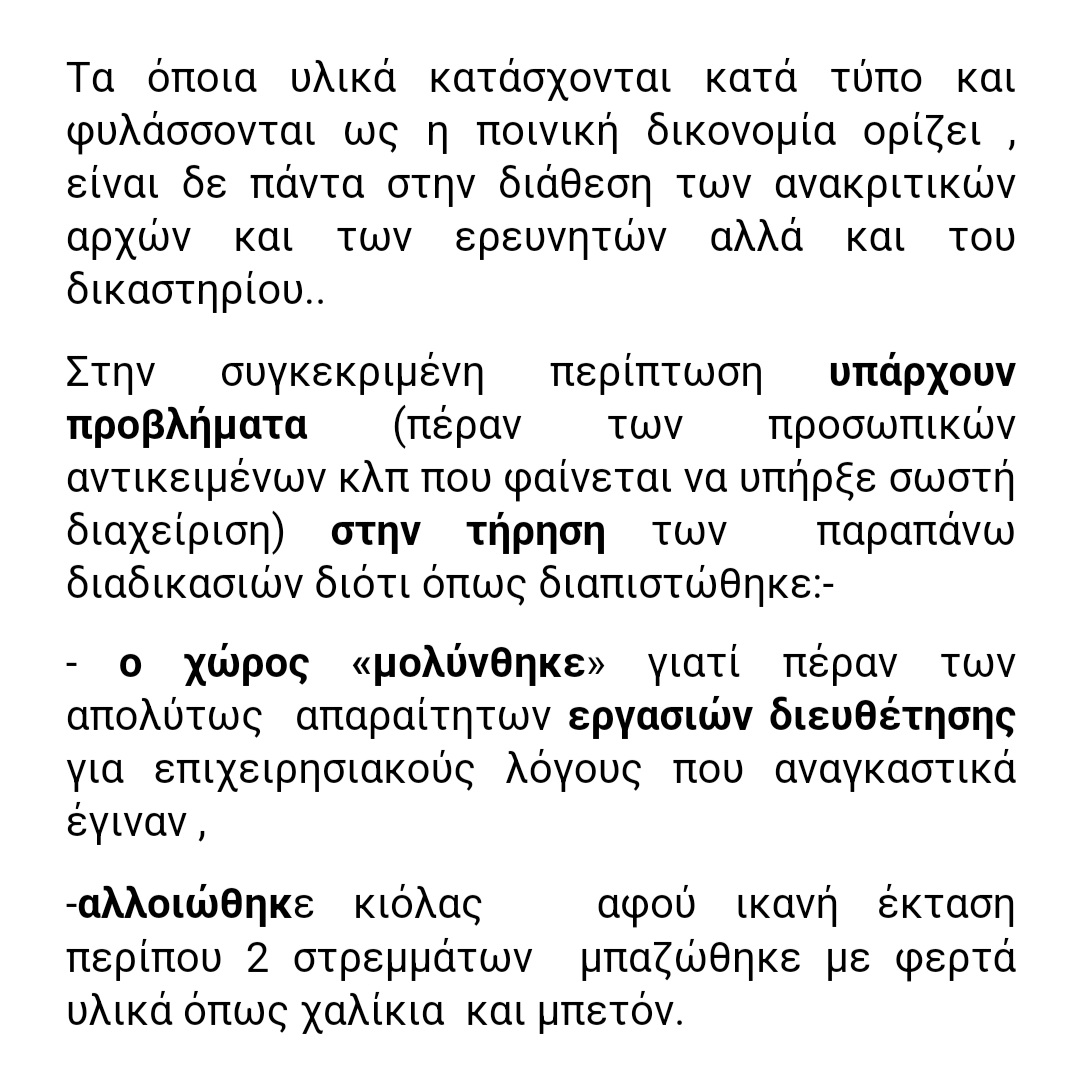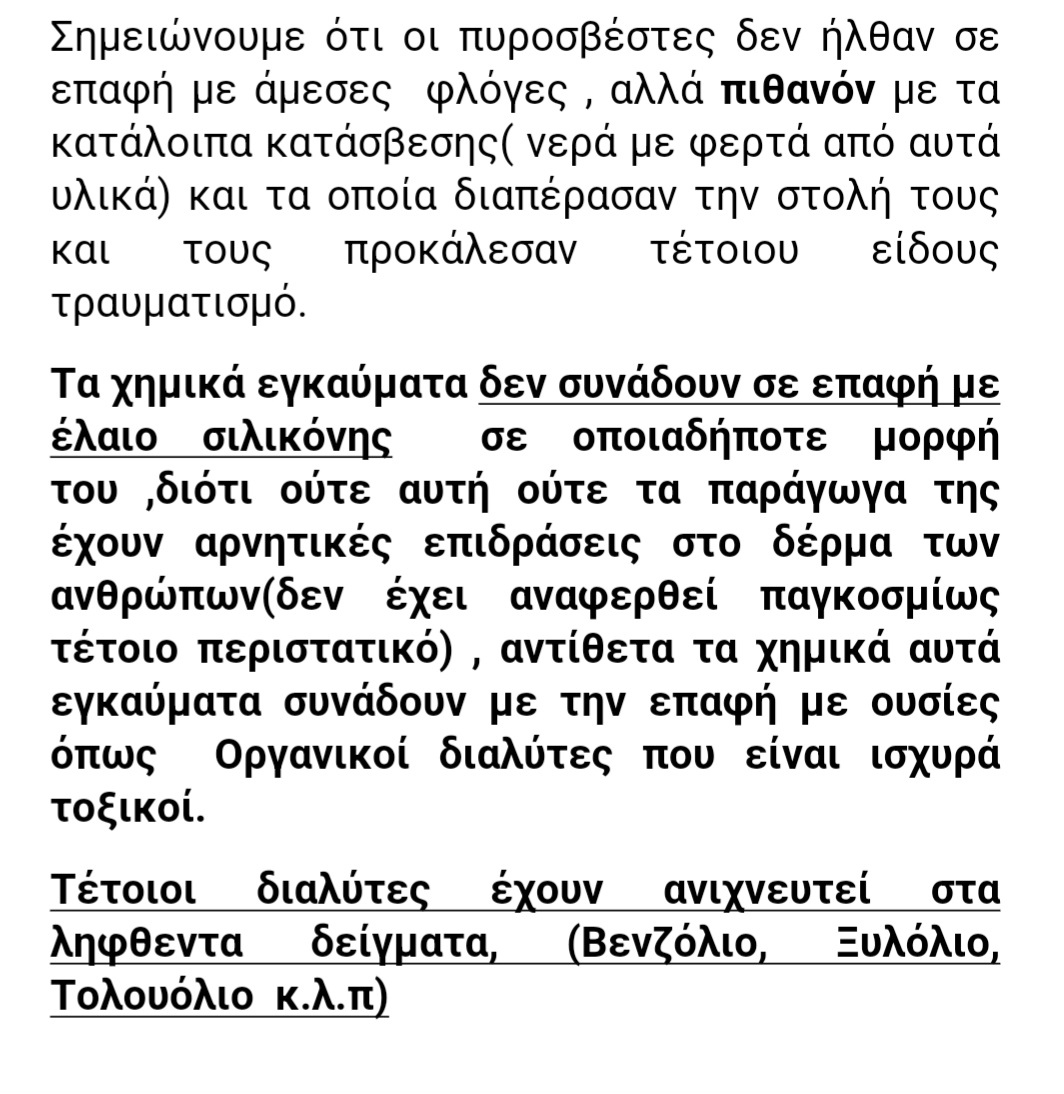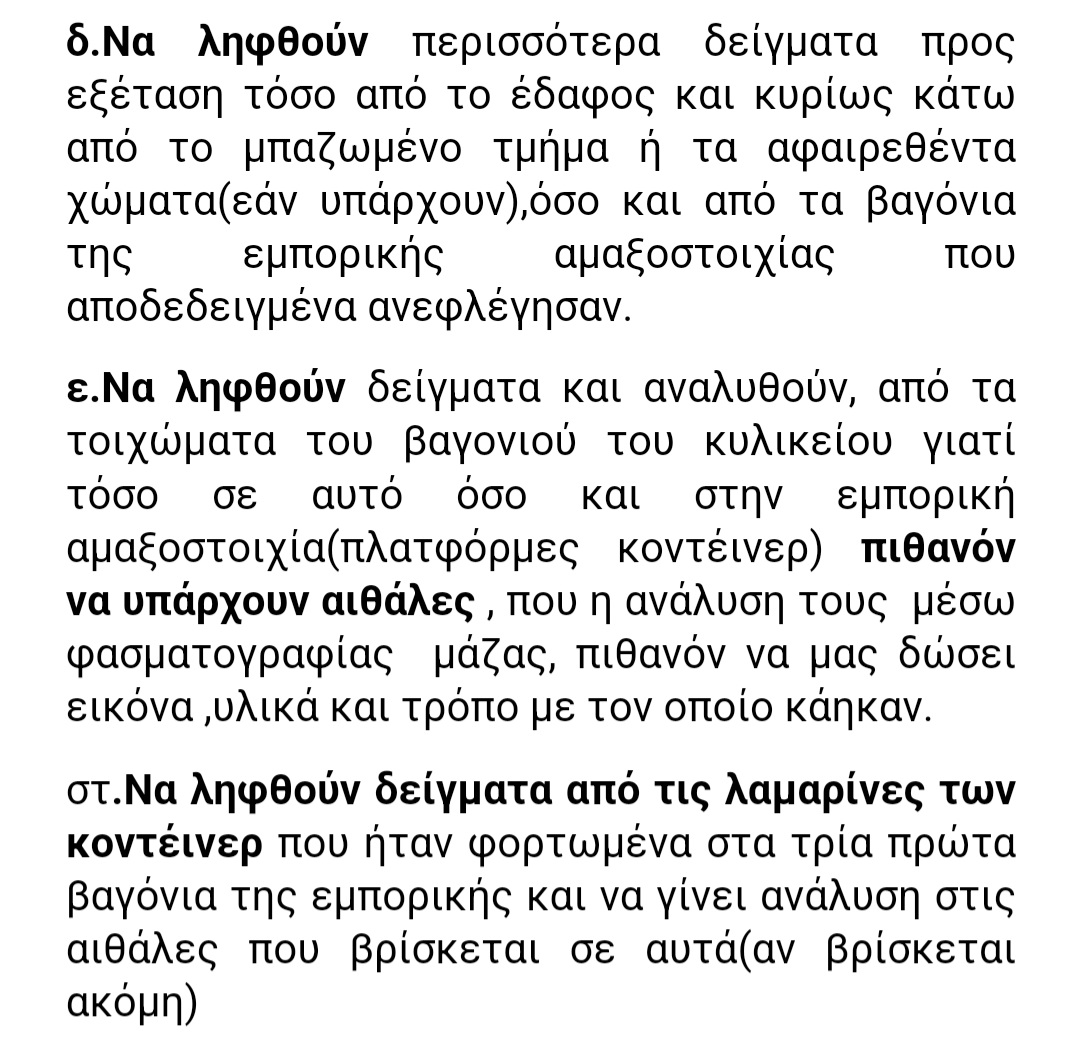In his conclusion, Mr. Kokotsakis attempts to explain the phenomenon of the explosion during the collision of the trains while at the same time identifying the errors and omissions in the investigations
To the appellant investigator, who is investigating the Tempe railway tragedy, the victims’ association handed over the final report of their technical advisor, Vassilis Kokotsakis, a fire expert.
In his conclusion, Mr. Kokotsakis attempts to explain the explosion phenomenon when trains collide. The silicone oil to which the explosion is attributed by the appointed experts does not exhibit behavior consistent with the characteristics of this particular explosion, says Mr. Kokotsakis, pointing out that such an explosion is caused by the presence of liquefied gas or highly viscous liquid fuel (fuels, solvents, gases) substances and compounds detected in the samples taken (benzene, toluene, xylene).
The expert, in fact, refers to chemical burns suffered by four firefighters which were not caused by contact with flames.
Vassilis Kokotsakis identifies in his report the errors and omissions in investigations, with the first being that the site of the conflict was “contaminated” and altered after approximately 2 acres were covered with gravel and concrete.

Furthermore, the wreckage was not properly stored and protected while sooty sheets were not sampled in time from the commercial containers and the passenger train canteen, suggesting further sampling.
The relatives of the victims often ask the authorities about it where are commercial containers that are shown in videos, but are not in Koulouri.
Source: Skai
I have worked as a journalist for over 10 years, and my work has been featured on many different news websites. I am also an author, and my work has been published in several books. I specialize in opinion writing, and I often write about current events and controversial topics. I am a very well-rounded writer, and I have a lot of experience in different areas of journalism. I am a very hard worker, and I am always willing to put in the extra effort to get the job done.












